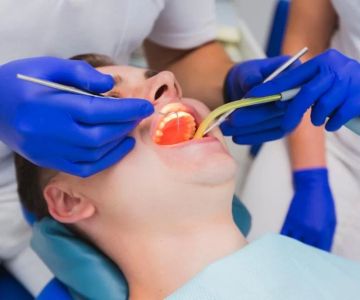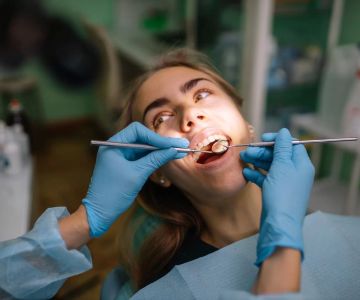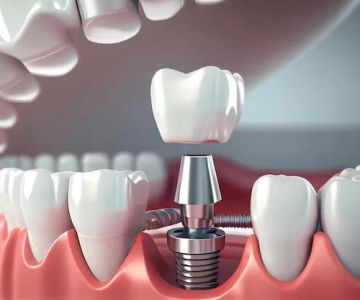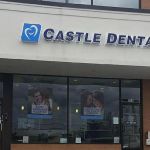Accessible Dental Care: Dentistry for the Hearing Impaired
- 1. The Importance of Accessible Dental Care
- 2. Challenges Faced by Hearing Impaired Patients
- 3. Creating a Deaf-Friendly Dental Practice
- 4. Effective Communication Strategies
- 5. The Role of Technology
- 6. Building Trust and Rapport
- 7. Ensuring Equitable Dental Care
Ensuring everyone has access to quality healthcare is a fundamental principle, yet many individuals face unique challenges when accessing dental services. The question of "Dentistry for the hearing impaired" highlights the need for inclusive and accessible practices that cater to the specific needs of deaf and hard-of-hearing patients. This article delves into the challenges faced by the hearing-impaired community and provides practical solutions for dental professionals to create a more welcoming environment. We aim to promote better healthcare for everyone.
1. The Importance of Accessible Dental Care
Oral health is integral to overall health, and everyone deserves equal access to dental care. For individuals with hearing impairments, this often means that dental practices need to adapt to provide inclusive and effective care. Lack of access can lead to preventable dental problems and exacerbate existing health issues, which underscores the importance of finding solutions that remove barriers for everyone.
2. Challenges Faced by Hearing Impaired Patients
Hearing impaired patients often encounter various obstacles when navigating dental appointments. These challenges stem primarily from communication barriers.
2.1 Communication Barriers
One of the biggest obstacles for hearing-impaired patients is the lack of effective communication methods. Standard verbal communication during dental procedures can be challenging or impossible for those with hearing loss. This lack of clear communication can lead to misunderstandings and anxiety.
2.2 Anxiety and Misunderstandings
The inability to communicate effectively can lead to feelings of anxiety and frustration for hearing-impaired patients. They might miss instructions, explanations, or important information, which can negatively impact their overall experience. A lack of communication can be a source of immense stress for many patients.
2.3 Lack of Awareness
Many dental practices lack awareness of the specific needs of deaf and hard-of-hearing patients. This often results in inadequate accommodations and a less than inclusive experience. It’s important to have the proper resources and education to assist people from all walks of life.
3. Creating a Deaf-Friendly Dental Practice
Making a dental practice more accessible to deaf and hard-of-hearing patients involves several key steps. Creating a welcoming and comfortable environment is key to making people of all abilities feel comfortable.
- Training Staff: Provide training for staff on basic sign language and effective communication strategies.
- Visual Aids: Implement visual aids such as diagrams, charts, and written materials.
- Accessible Environment: Ensure the practice is well-lit and has a layout that facilitates lip reading.
- Patient-Centered Approach: Adopt a patient-centered approach that focuses on the needs of each individual.
4. Effective Communication Strategies
Dental professionals should implement strategies that ensure clear and effective communication with hearing-impaired patients.
4.1 Visual Aids
Visual aids can include diagrams of dental procedures, charts illustrating oral hygiene techniques, and written instructions. These tools can help patients understand the treatment process. It also eliminates many of the obstacles associated with purely verbal communication.
4.2 Written Communication
Using written communication, whether it’s through notes, email, or text messages, can be helpful for sharing important information and clarifying any doubts. This practice can be very helpful in providing specific details about a patient’s care plan.
4.3 Sign Language Proficiency
If possible, having staff members who are proficient in sign language can significantly enhance the patient experience and help develop a better level of trust with patients. This shows a true investment in inclusivity and creating a welcoming environment. Having at least one staff member who can communicate effectively using sign language can be beneficial to so many patients.
5. The Role of Technology
Technology can play a significant role in improving accessibility. Some tools, like video relay services, can be used to interpret communication with deaf patients. Communication apps that allow real time text to speech and vice versa can be a great tool for those who have difficulty with sign language. These advancements can ensure that hearing impaired patients have better opportunities for clear communication during their visits.
6. Building Trust and Rapport
Building a trusting relationship with patients is essential for effective care. Dental professionals should approach interactions with sensitivity, empathy, and patience. Creating a safe and open environment is often beneficial for all patients, regardless of their backgrounds or abilities. Taking the time to ensure patients feel heard and respected can greatly enhance the overall experience.
7. Ensuring Equitable Dental Care
By implementing these steps, dental practices can create an inclusive and accessible environment for deaf and hard-of-hearing individuals. If we want to achieve truly equitable healthcare, it is essential to consider the specific needs of all types of people and make the necessary adjustments to ensure everyone has equal access. At Dentistry Toothtruth, we are dedicated to promoting inclusive dental care practices. Visit our website to find resources and learn more about how to make dental care accessible for all. Click here to begin your journey towards a more inclusive healthcare environment.







 Alliance Orthodontics4.0 (23 review)
Alliance Orthodontics4.0 (23 review) Gary Roberts, DDS - Stanford Medicine Children's Health4.0 (6 review)
Gary Roberts, DDS - Stanford Medicine Children's Health4.0 (6 review) The Orthodontists at Council Bluffs0.0 (0 review)
The Orthodontists at Council Bluffs0.0 (0 review) Lakewood Dental Care4.0 (12 review)
Lakewood Dental Care4.0 (12 review) Castle Dental & Orthodontics4.0 (249 review)
Castle Dental & Orthodontics4.0 (249 review) Isthmus Dental, Ltd4.0 (215 review)
Isthmus Dental, Ltd4.0 (215 review) The Importance of Oral Health Education During Pregnancy for a Healthy Pregnancy
The Importance of Oral Health Education During Pregnancy for a Healthy Pregnancy Best Tips for Brushing Your Teeth Properly for Healthy Gums: Essential Techniques for Oral Health
Best Tips for Brushing Your Teeth Properly for Healthy Gums: Essential Techniques for Oral Health Why Skipping Dental Checkups Can Lead to Bigger Oral Health Problems
Why Skipping Dental Checkups Can Lead to Bigger Oral Health Problems Advantages of Porcelain Dental Restorations
Advantages of Porcelain Dental Restorations How Can Diabetes Cause Tooth and Gum Problems? Preventing and Managing Oral Health Issues
How Can Diabetes Cause Tooth and Gum Problems? Preventing and Managing Oral Health Issues Healthy Habits for Promoting Good Oral Health and Hygiene: Tips for a Healthy Smile
Healthy Habits for Promoting Good Oral Health and Hygiene: Tips for a Healthy Smile